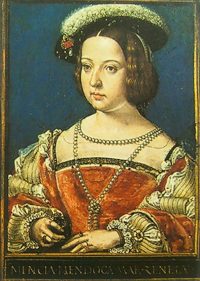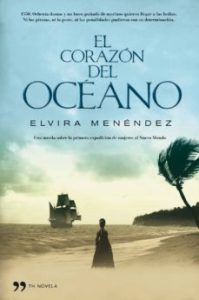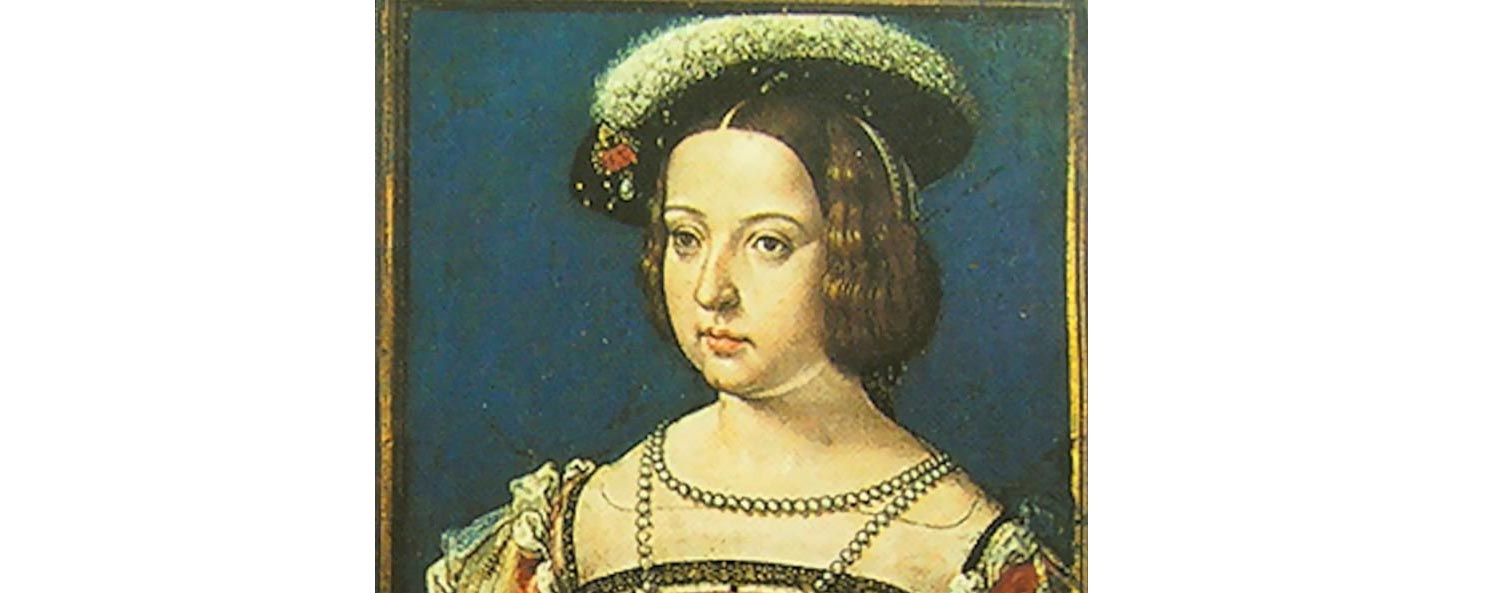Source:Sonrisas en el camino
The men didn’t go alone
As the title of the book published by the Ministry of Defense in 2012 goes, “The men didn’t go alone”, and indeed they didn’t do so, nor they fought, built, or contributed to enlarge the New World, Spain beyond the seas, the Empire where the sun never set, on their own. And yes, women were a fundamental part of that titanic task started by Columbus in 1492.
From the first moment, the women took part in America’s enterprise. Already on Columbus’ third voyage, women were in the naos to do commendable work, to lay down civilizing stones, and found settlements. The miscegenation was allowed, even by the Catholic Monarchs, and the work was immense. Cities, universities, hospitals, convents, councils, … a mammoth effort to move mainland Spain to overseas territories. Can anyone tell me how many universities or hospitals the English founded in America? What about the Portuguese in Brazil? Well, that’s just it.
And like I said, women contributed to everything. The archives speak for themselves. And although there are many, we can name some examples such as Malintzin, together with Hernán Cortés, an indigenous woman with courage, who contributed a lot to the path of the Extremaduran conqueror. Women sailors, fighters, and brave. Isabel Barreto, Inés Suárez with Valdivia, Beatriz de la Cueva (second wife of Pedro de Alvarado) and our protagonist, Mencía Calderón, first adelantada in America, but what was an “adelantado”?
First “adelantada”
 Being an “adelantado” was a dignity received from the king, which was entrusted to accomplish something, to undertake some important tasks. The “adelantado”, in the New World, only reported to the Viceroy. The figure of the border “adelantado” was born in the latter part of the Middle Ages, with military, government, and judicial functions, with the task difficult to keep Muslims at bay. Spain, involved to the fullest in a reconquest task, accustomed over the centuries to managing the “limes” of its kingdoms, where it learned everything necessary to set in motion in the new lands, continued to use this figure.
Being an “adelantado” was a dignity received from the king, which was entrusted to accomplish something, to undertake some important tasks. The “adelantado”, in the New World, only reported to the Viceroy. The figure of the border “adelantado” was born in the latter part of the Middle Ages, with military, government, and judicial functions, with the task difficult to keep Muslims at bay. Spain, involved to the fullest in a reconquest task, accustomed over the centuries to managing the “limes” of its kingdoms, where it learned everything necessary to set in motion in the new lands, continued to use this figure.
Well, that organizational structure, alive and in force on the changing borders of that late medieval Spain, where the scribes, translators, cartographers, and many other figures necessary to continue advancing and protecting themselves at the same time, crossed the puddle and made it possible, as I mentioned, the conquest of America.
Mecía Calderón Ocampo was a natural from Medellin, a village in Badajoz (Extremadura). He married Juan de Sanabria, who was a widower and “adelantado” in Río de la Plata (River Plate). Sanabria died unexpectedly in Seville while preparing an expedition of 6 ships with the mission of carrying 100 families and some 300 young people, between men and women, to found two villages and give stability to a border area with the Portuguese, in present-day Paraguay, who were constantly importuning them.
Saving the expedition
Although there are always doubts and fears when starting an enterprise of that caliber, everything rushes with Sanabria’s death. An expedition had sponsors, who withdrew once they became aware of the death. Setbacks that were barely resolved, even with the appointment of the new “adelantado”, the young Diego de Sanabria, son of Juan and stepson of Mrs. Mencía. The storm hovered over the expedition even before it had set sail. This is when our protagonist set out, at all costs, to save the expedition and propose something unheard of to the king: to share the title of “adelantado” with her stepson. To the joy and pride of Mrs. Mencía, the monarch accepted. A power of undoubted conviction and a charism worthy of mention.
And she got to work from the first moment. She held back the cash flow, the sponsors returned and the expedition took shape. Thus, on April 10, 1550, three boats departed from Sanlúcar: the patache San Miguel, the caravel Asunción and the nao San Juan. Ms. Mencía went to sea with her three daughters and led a group of 50 women, mostly young married women. The young Diego was left in Spain on a mission to raise more money for the expedition, to send the remaining three ships.
Storms, pirates and the Portuguese
From that moment on, from setting the course for the Americas, the setbacks and misfortunes befell on the expedition. Hardships, storms, the fury of the Atlantic, and even a Norman pirate, always seeking helpless victims, who attacked the patache where the women were traveling. Thus, of those 3 boats, only two managed to reach the Island of Santa Catalina, in Brazil. But there, what could get worse, got worse.
Once they made it to the mainland, they were apprehended by the Portuguese, who held her for 2 years. Struggle, fortitude, and courage personified in Doña Mencía who, in spite of everything, and at a time when the rapes were the order of the day, had managed to keep the group safe, even preserve the honor of women. But misfortunes kept lurking in the thicket of the jungle.
Being prey to the Portuguese, Mrs. Mencía was aware of her stepson’s advances. She was certain that he had secured the money needed to assemble three other ships and that he had set sail but also learned that a terrible storm caused the expedition to wreck off the coast of Venezuela. Everything had been lost, even the young Don Diego was left for dead. From that moment on, the shared enterprise was lost in effect. Mrs. Mencía was left alone in the new world, and although she no longer had the status of “adelantada”, she felt responsible for a group of women, had a mission (with marked clauses of her contract with the King), and was willing, at all costs, to fulfill it. So, she founded Fort San Francisco (present-day Sao Francisco do Sul).
Fort San Francisco
That settlement, that fort founded by Mrs. Mencía survived hardly because the difficulties were tremendous. Hunger, climate, and, above all, the continuous attacks of the natives (some anthropophagus) were undermining the morale. Nothing was easy, everything cost a world; any step, however small, needed enormous effort and enthusiasm beyond doubt so as not to fall into discouragement. And there was no day when something did not happen that would thwart the will. Even in one of the hunting outings, the German chronicler Has Staden disappeared (thanks to his writings we know this story). He was kidnapped by the Tupinamba tribe from which he managed to escape, being rescued by a French ship. Once in Europe, he wrote his story, which was a success.
Mrs. Mencía had been left in the fort she had founded and it was getting harder and harder to survive there. Without help, no food, no close support, it was vanishing. Surrounded by enemy tribes, Portuguese, and hardships they saw no way out. But fate is capricious and gave a slight chance. One day a half-breed named Diaz appeared; he knew the way to Asunción. After discussing and thinking about it, in the face of such doom, it was decided to take the road. A 1300 km journey through the jungle. Anybody give more?
The Way of Asunción
 Has anyone of you made a journey on foot, through the jungle, saving the ridiculous distance of 1,300 km? Hunger, distressing thirst, diverse dangers, flowing rivers, mountain ranges, Indians, wild and dangerous beings. Fatigue, despair, mutiny, extreme tiredness, and close encounters with death. There is hardly anything written about this journey, there is no testimony of this exhausting travel. All that is known is that, with barely 50 km to get to Asunción, the people of that place were aware of that Caravan of Women and ran with help, food and transport. Mrs. Mencía refused and continued on foot what was left. Thus in March 1556, 6 years after leaving Sanlúcar de Barrameda, she entered by his own foot in Asunción. And with her there were 21 women and 22 men, who had followed her through half the world, saving all kinds of dangers. Quite a hero.
Has anyone of you made a journey on foot, through the jungle, saving the ridiculous distance of 1,300 km? Hunger, distressing thirst, diverse dangers, flowing rivers, mountain ranges, Indians, wild and dangerous beings. Fatigue, despair, mutiny, extreme tiredness, and close encounters with death. There is hardly anything written about this journey, there is no testimony of this exhausting travel. All that is known is that, with barely 50 km to get to Asunción, the people of that place were aware of that Caravan of Women and ran with help, food and transport. Mrs. Mencía refused and continued on foot what was left. Thus in March 1556, 6 years after leaving Sanlúcar de Barrameda, she entered by his own foot in Asunción. And with her there were 21 women and 22 men, who had followed her through half the world, saving all kinds of dangers. Quite a hero.
An astonishing story, a shocking and worth knowing story that has reached us thanks to the German chronicler. And that today we can also get to know better thanks to the book “The Heart of the Ocean”, by Elvira Menéndez who, thanks to her research in the Archivo de Indias of Seville, was able to document it with realism. There is also a Spanish TV series based on it. And another interesting book to read and learn is “Spanish Women in the New World”, a great essay by Eloísa Gómez-Lucena.
A brave heroine, adelantada in the New World
Mrs. Mencía Calderón, the first “adelantada” in America. A brave and thorough woman who wanted to fulfill the mission entrusted, who wanted to contribute to making her land bigger, who wanted to put her grain of sand and left her mark in history. May her memory always stay with us and serve these words as a tribute.
Share this article
On This Day
- 1528 Prince Felipe is sworn as heir to the Spanish kingdoms in Madrid.
- 1593 The city of San Salvador de Jujuy (Argentina) is founded by Francisco Argañaraz y Murguía.
- 1776 Battle of Lexington and Concord (United States).
History of Spain
26 August 2020
27 January 2021
Communism: Now and Then
23 December 2022
28 July 2021






